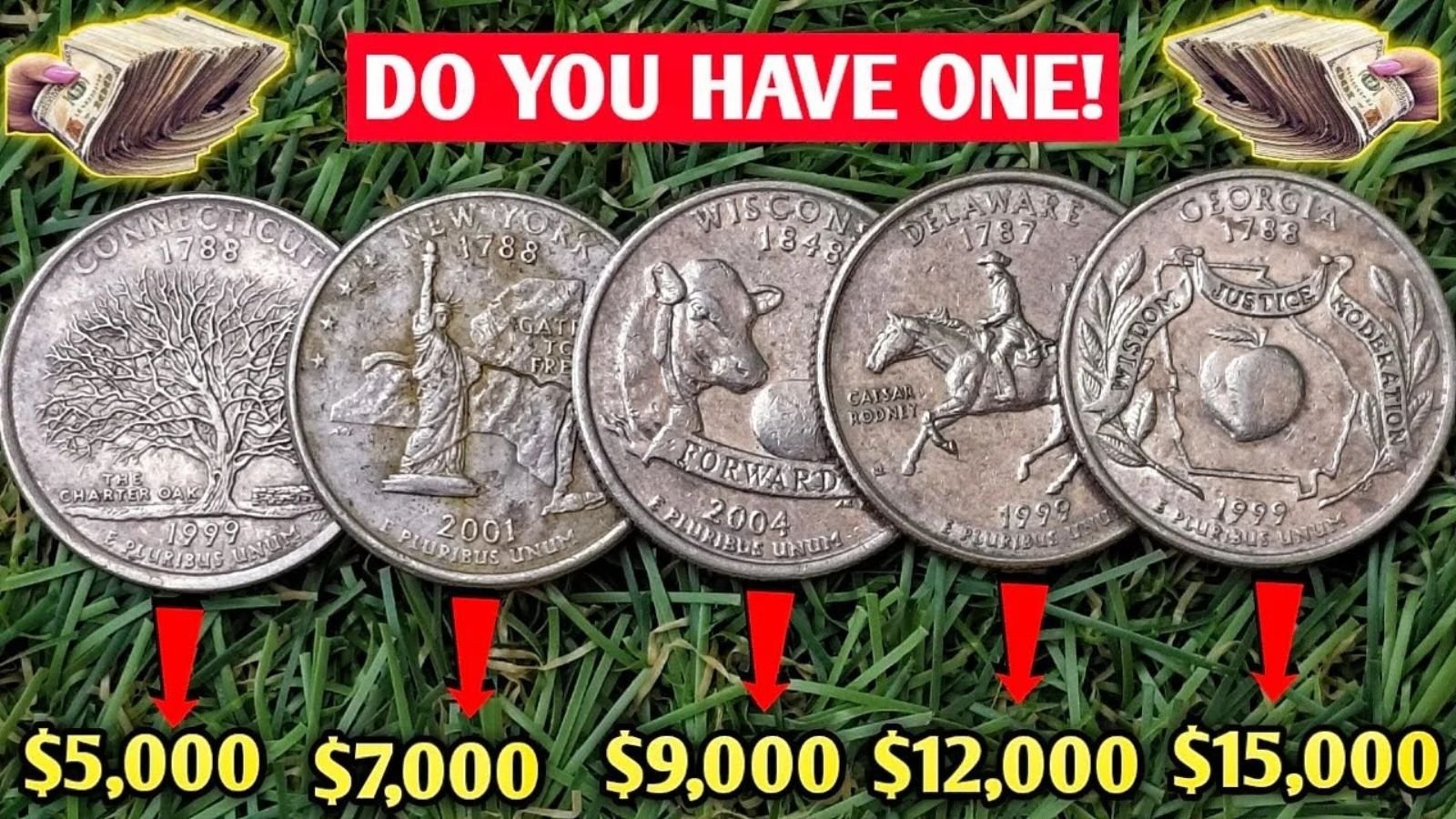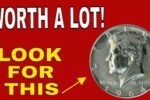For most people, a quarter is just a small coin — something to drop into a vending machine, slot into a parking meter, or hand over for exact change without a second thought. But imagine if one of those ordinary-looking quarters in your pocket turned out to be worth a jaw-dropping $677,777. Sounds like a fantasy? It isn’t. The Rare Bicentennial Quarter is very real, and what’s even more surprising is that it could still be in circulation today, blending in with millions of other common coins.
While such stories might sound too good to be true, in the world of numismatics — the study and collection of coins — they’re not unheard of. Coins gain immense value for various reasons, from minting errors to unique metal compositions and historical significance. In this comprehensive guide, we’ll explore what makes the Rare Bicentennial Quarter so exceptional, how to identify one, and why you should start checking your spare change more carefully.
$2,500 Cash App Class Action Settlement 2025, Check Payment Date & Status
Rare Bicentennial Quarter: A Brief Historical Background
To truly appreciate the value of the Rare Bicentennial Quarter, it’s essential to understand its origins. In 1976, the United States Mint released a special series of coins to commemorate 200 years of American independence. Among them was the Bicentennial Quarter, distinguished by its unique reverse design — a colonial drummer boy standing proudly with a torch encircled by 13 stars, symbolizing the original colonies. The obverse bore the dual date “1776–1976,” a stark departure from the typical single-year minting.
These coins were not rare by production numbers. In fact, hundreds of millions of Bicentennial Quarters were struck at various mints across the country, including Philadelphia, Denver, and San Francisco. You’ve probably held one in your hand at some point, given how widely they were circulated. However, within this massive batch lies the elusive and highly sought-after Rare Bicentennial Quarter, whose value has shocked both collectors and everyday people alike.
Why Is This Rare Bicentennial Quarter Worth $677,777?
The extraordinary value of this Rare Bicentennial Quarter comes from a perfect storm of unusual attributes, including minting anomalies, composition, condition, and high collector demand. Here are the core reasons behind its high valuation:
1. Minting Errors and Anomalies
Many valuable coins gain their worth due to mistakes made during the minting process. This Rare Bicentennial Quarter may have been struck on a silver planchet rather than the usual copper-nickel clad composition, which is a rare and unintentional error. Others speculate it might exhibit doubling on the date or design, adding to its uniqueness. Minting errors like these are incredibly rare and command massive premiums in the numismatic market.
2. Limited Production Under Unique Conditions
While Bicentennial Quarters were mass-produced, only a handful were created under special or experimental conditions. Some may have slipped through quality control or were part of test runs using silver planchets intended for collector sets. These low-production anomalies make the Rare Bicentennial Quarter a scarce gem.
3. Outstanding Condition (Mint State)
The $677,777 valuation is partially attributed to the coin’s condition. Coins graded as “mint state” or “near-mint” by professional grading services fetch significantly higher prices. The Rare Bicentennial Quarter in question is believed to be in near-flawless condition, which drastically increases its market value.
4. Patriotic and Historical Significance
Beyond its physical traits, this coin holds sentimental and patriotic value. The 1976 Bicentennial series marked a major milestone in U.S. history. Collectors often seek out coins with strong historical relevance, and the Bicentennial celebration adds a rich layer of meaning to the quarter’s collectibility.
5. Sky-High Demand Among Collectors
There’s a large and active community of collectors who chase rare and exceptional coins, especially those with American heritage. The buzz surrounding this Rare Bicentennial Quarter has only intensified its demand, causing prices to surge in auctions and private sales alike.
Snapshot: Key Details of the $677,777 Rare Bicentennial Quarter
| Feature | Description |
|---|---|
| Coin Name | 1976 Bicentennial Quarter |
| Design Highlight | Colonial drummer boy, dual date “1776–1976” |
| Estimated Value | $677,777 |
| Rarity Factor | Minting error, struck on silver planchet |
| Material | Possibly 40% silver instead of copper-nickel |
| Condition | Near-mint or mint state |
| Circulation Status | Believed to still be in general circulation |
| Demand Level | Extremely high among coin collectors worldwide |
How to Identify a Rare Bicentennial Quarter in Your Collection
You might be wondering — how can I tell if I’ve come across one of these rare gems? While most Bicentennial Quarters are worth only face value, a few subtle signs can help you distinguish a Rare Bicentennial Quarter from an ordinary one.
1. Look for Silver Coloring
Most standard quarters from 1976 are clad with a copper core. If your quarter appears entirely silver-toned on the edges without the typical copper stripe, it might be struck on a 40% silver planchet — a key indicator of rarity.
2. Check the Weight
A standard quarter weighs approximately 5.67 grams. A silver planchet version may weigh slightly more. Using a precision digital scale can help determine if your coin deviates from the norm.
3. Search for Doubling or Misprints
Examine the coin under magnification. Look for doubling of letters or numbers, especially in the “1776–1976” inscription. Even slight errors can make your coin a valuable collector’s piece.
4. Evaluate the Condition
If your Bicentennial Quarter looks shiny, uncirculated, or free from scratches and nicks, it’s worth a closer inspection. Condition can make the difference between a collector’s dream and just another coin in your pocket.
What To Do If You Think You Found the Rare Bicentennial Quarter
So you’ve found a coin that looks promising — now what? Here are the next steps to preserve its value and get an accurate evaluation:
1. Do Not Clean the Coin
Cleaning a coin, no matter how tempting, can severely reduce its value. Even rubbing it with a cloth can leave micro-abrasions that devalue the coin to professional appraisers.
2. Protect the Coin Properly
Store it in a plastic coin flip, soft pouch, or hard case to prevent further wear. Always handle it by the edges and avoid direct skin contact.
3. Get a Professional Appraisal
Contact a certified numismatist or send the coin to a grading service such as PCGS or NGC. These experts can authenticate the coin, grade its condition, and give you an accurate market valuation.
4. Compare With Verified Examples
Research authenticated images and auction records of the Rare Bicentennial Quarter. Comparing design features, wear patterns, and color can help confirm your coin’s authenticity.
5. Explore Selling Options
If your coin is confirmed to be rare and valuable, consider selling it through a reputable auction house, coin show, or collector marketplace. Avoid pawn shops or unverified buyers, as they may not offer fair market value.
Common FAQs About the Rare Bicentennial Quarter
Q: Are all Bicentennial Quarters worth more than 25 cents?
A: No. The majority are still worth face value. Only those with minting errors, silver planchets, or exceptional preservation qualify as valuable.
Q: How can I verify if my coin is the rare one?
A: Look for a silver edge, heavier weight, doubling, or flawless condition. A professional appraisal is the best way to be sure.
Q: Why is one Bicentennial Quarter worth $677,777?
A: Its rarity, minting anomaly, condition, and collector demand create the perfect storm for such a high value.
Q: Can these coins still be found in circulation?
A: Yes, albeit rarely. The high-volume production means some rarer coins may have escaped notice and still reside in coin jars and drawers.
Q: Where should I sell a rare coin if I find one?
A: Choose platforms like Heritage Auctions, Stack’s Bowers, or certified coin dealers who specialize in rare American currency.
Final Thoughts: Keep Your Eyes Open for a Life-Changing Coin
In a world where most people overlook their pocket change, stories like that of the Rare Bicentennial Quarter serve as powerful reminders that treasure might be hiding in plain sight. What looks like an ordinary coin could be worth hundreds of thousands of dollars — and you wouldn’t know unless you looked a little closer.
So the next time you’re handed change at a store or emptying the coins from your car’s cup holder, take a moment to scan for the distinctive drummer boy and that telltale “1776–1976” inscription. Because you never know — the next Rare Bicentennial Quarter could be right there in your hand, waiting to turn your spare change into a six-figure fortune.
Keep your curiosity alive, your coins clean (but not cleaned!), and your eyes peeled. That tiny piece of American history could hold the kind of value that changes your financial future forever.




